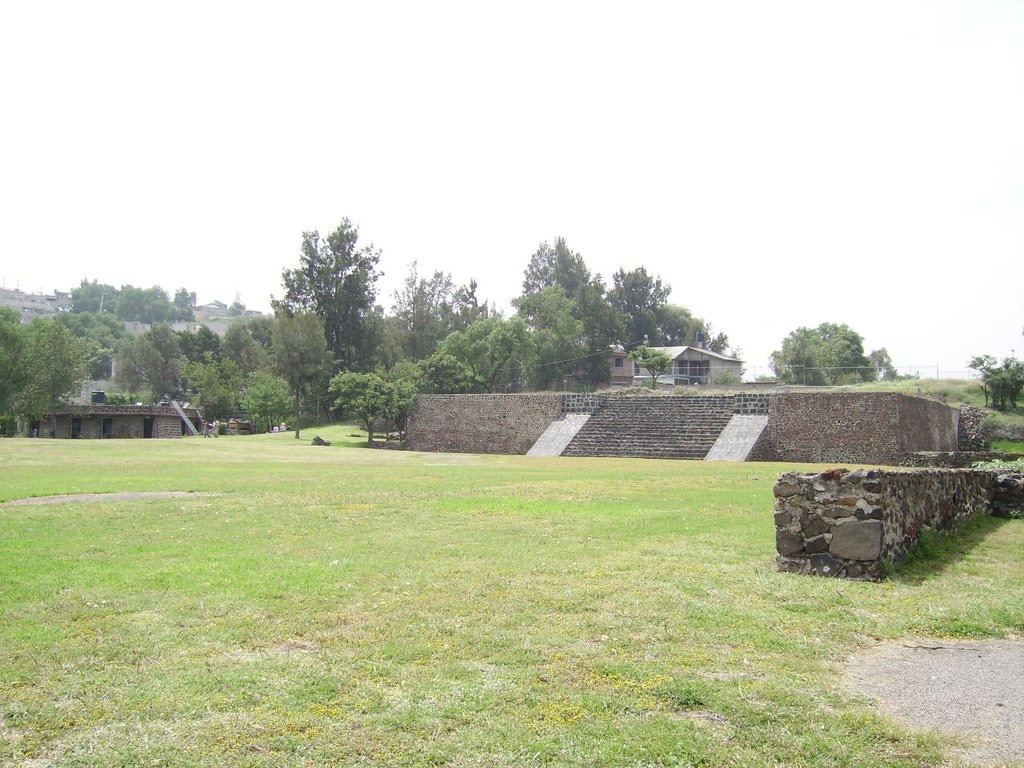Chimalhuacán is a city steeped in history, located in the State of Mexico. It boasts a rich pre-Columbian heritage, having been an important part of the ancient Mesoamerican civilization. The city’s name, derived from Nahuatl, means “place of those who have shields,” reflecting its storied past. Chimalhuacán has seen various cultural influences over the centuries, including the Toltecs and later the Aztecs. Today, it is not only a historical site but also a bustling urban area, blending the ancient with the modern.
Get your dose of History via Email
Historical Background of Chimalhuacán
Chimalhuacán’s discovery dates back to pre-Columbian times. The Toltecs first settled it, and later, the Aztecs took over. The exact date of its founding remains unclear, but it was well established by the time the Aztecs arrived. The city’s strategic location made it a focal point for military and trade activities. Over time, Chimalhuacán became known for its skilled warriors and artisans.
After the Spanish conquest, Chimalhuacán underwent significant changes. The indigenous population faced hardships under colonial rule. Despite this, the city retained its cultural identity. It was during this period that many of its historical records were documented by Spanish chroniclers.
In modern times, Chimalhuacán has been the subject of archaeological interest. Researchers have unearthed various artifacts that shed light on its past inhabitants. These findings have helped historians piece together the city’s complex history.
Chimalhuacán has witnessed several historically important events. It played a role in the Mexican War of Independence and the Mexican Revolution. These conflicts left an indelible mark on the city’s character and its people.
Today, Chimalhuacán is a testament to its resilient history. It stands as a reminder of the rich cultural tapestry that is Mexico’s heritage. The city continues to attract historians and tourists alike, eager to explore its ancient roots and colonial past.
About Chimalhuacán
Chimalhuacán’s architecture reflects its layered history. Pre-Columbian structures sit alongside colonial-era buildings. The city’s layout follows traditional Mesoamerican planning, with central plazas surrounded by important civic and religious buildings.
The materials used in construction vary from ancient stone and stucco to more modern brick and mortar. Many of the older structures feature intricate carvings and reliefs, indicative of the skilled craftsmanship of its builders.
One of the architectural highlights of Chimalhuacán is the main church, built atop a pre-Columbian temple. This church is a prime example of the syncretism between indigenous and Spanish cultures that characterizes much of Mexico’s colonial architecture.
Chimalhuacán also boasts a variety of sculptures and monuments that celebrate its history. These include statues of historical figures and symbolic representations of the city’s past.
Despite urban development, efforts have been made to preserve Chimalhuacán’s historical sites. These efforts ensure that the city’s architectural heritage remains intact for future generations to appreciate.
Theories and Interpretations
Chimalhuacán’s history is rich with theories and interpretations. Scholars have debated its role in Mesoamerican trade networks and military campaigns. Some suggest it was a significant military outpost for the Aztecs.
There are mysteries surrounding certain artifacts found in Chimalhuacán. Some objects have unique iconography that does not match typical Aztec motifs. This has led to speculation about cultural exchanges with other Mesoamerican civilizations.
Historians have had to interpret Chimalhuacán’s history with limited records. The Spanish conquest resulted in the loss of many indigenous documents. As a result, much of what is known comes from Spanish accounts and archaeological evidence.
Dating of Chimalhuacán’s artifacts and structures has been carried out using methods like stratigraphy and radiocarbon dating. These techniques have helped establish a timeline for the city’s development.
Despite the challenges, ongoing research continues to uncover new aspects of Chimalhuacán’s past. Each discovery adds to the understanding of this historical city’s role in the broader context of Mesoamerican history.
At a glance
Country: Mexico
Civilization: Toltec, Aztec
Age: Pre-Columbian era, exact founding date unknown
Conclusion and Sources
Reputable sources used in creating this article:

